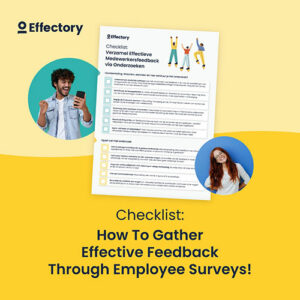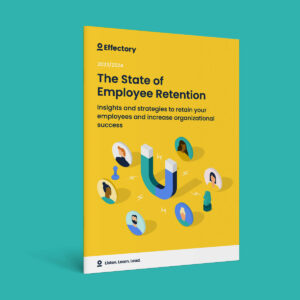Fundraising season is fast approaching and it’s time to oil the wheels. Flashy presentations, financial projections and a fresh new look are all part of the game plan. However, when businesses consider raising capital, they often overlook employee surveys or fostering staff engagement. Especially in regard to impressing that sought-after investor they’ve been courting for months. But what if prioritizing employee satisfaction and creating an effective survey strategy could be your secret weapon during your next pitch? Rest assured: this isn’t some mystical “hippie” tactic; rather, it can serve as a catalyst for productivity within your organization. Don’t believe us? Then read on.
How Employee Surveys can Help You get More Investors on Board

Impress Investors with More Than Just Profit Forecasts and Promises
One of the keys to success is differentiation. If you can impress others with your unique qualities, you can go far – no matter what industry you’re in. In the world of fundraising, your human capital is one of the unique differentiators you can use to convince investors of your future success. (Source)
In this context, employee surveys are one of the most powerful tools you can use for gaining the trust of shareholders. That’s because surveys give you concrete insights into the productivity, satisfaction and loyalty of your employees. And with the help of clear graphs and charts, allow you to show investors just how committed your employees are to your company, your product and their teams.
How to gather feedback from your employees
The definitive checklist for creating your employee engagement survey.
DownloadEmployee Surveys and Long-Term Business Success: Why Employee Well-Being and Engagement Matter to Investors
What makes an investment promising? And what impact do management and employees have on a company’s success? A Gallup study showed that companies with high levels of employee engagement (moving in the top quartile) were more than twice as likely to be successful as companies in the bottom quartile. An impressive number – and one that any investor worth their salt would look out for. But what’s the difference, and why are engaged organizations so much more productive? The answer is simple.
Engaged employees enjoy going to work and perform better overall. They also have a better sense of customer needs and pay closer attention to processes, standards, and systems. With their human capital willing to go that extra mile for the company, highly engaged business units achieve a positive difference of 10 percent in customer ratings and 18 percent in revenue. These results translate into an overall positive profitability differential of 23 percent. (Source)
Download the Employee Experience Review
Discover how employees around the world are experiencing different parts of the employee journey and how this affects the employee experience.
DownloadEmployee Satisfaction Leads to Better Performance and Long-Term Success
An article in the Academy of Management Perspectives supports these findings. In it, Alex Edmans looks at 28 years worth of stock market data and finds that companies with high employee satisfaction scores “outperform their peers in long-term stock returns by 2.3 percent to 3.8 percent per year – cumulatively by 89 percent to 184 percent – even after controlling for other factors that might influence stock performance” (Edmans, 2016). Moreover, the results suggest that employee satisfaction is the cause of good performance, and not the other way around.
In this context, employee surveys are an excellent tool to get an accurate snapshot of your employees’ satisfaction and engagement, and to intervene quickly in case of poor performance. This, in turn, will help improve your bottom line. By asking your employees for feedback, you’ll gain valuable information that can help you optimize your business strategy and boost the profit and productivity numbers your investors may be looking out for.
Second, using employee surveys signals that your company values transparency and open communication. This builds trust and makes you more attractive to potential investors interested in a long-term partnership.
A Guide to Using Strategic Employee Surveys and a Quick Overview of What Investors are Looking for in Your Pitch
In the previous section, you learned how important it is to keep employees happy and engaged to ensure long-term business success. Business angels appreciate this approach – after all, an engaged workforce increases your company’s profitability and improves your chances of attracting more and better investors. But which topics should you focus on in your pitches to inspire and convince potential shareholders of your value? When reviewing your company and employee data, here are some of the things investors tend to look for:
1. Workforce Productivity & Engagement
As the data has shown, engaged employees are by far the most productive. Investors are always looking for companies with high employee productivity, as this tends to be an indicator of efficient use of resources and good business results. While employee surveys can’t always measure the hard numbers needed to accurately calculate employee productivity – such as revenue and profit per employee – they can capture other valuable intangibles that contribute to productivity. These metrics include employee engagement, 360-degree qualitative feedback, or the subjective assessment of a manager’s performance.
2. Employee Retention
It’s no secret that happy and engaged employees tend to stay longer, and companies with engaged employees have a 22 percent lower turnover rate. When fewer people leave your organization, your recruiting and onboarding costs go down and you create a more stable workforce. Investors value companies with low turnover because this indicates a strong culture and healthy workplace environment. You can use strategic employee surveys to measure important contextual metrics such as training needs, employee perceptions of their work environment, potential psychological distress, or whether there’s a positive culture and transparent communication in your organization. These metrics then form the various pillars of employee retention. If one of these pillars is shaky or crumbling, it can quickly lead to increased turnover and diminished investment opportunities. Strategic employee surveys can uncover these weaknesses and help you figure out what you should be focusing on.
In addition to company-wide employee surveys that collect data on the broader aspects of retention, you should also include specialized exit surveys in your HR strategy. Exit surveys are the ideal tool for finding out exactly why your talent is leaving. These insights will help you avoid similar churn in the future. Our data suggests that 50% of voluntary turnover could have been avoided if companies engaged with their employees sooner – that is before employees submitted their resignations.
The State of Employee Retention
Uncover why employees leave, hidden costs to organizations, and proven retention strategies in our insightful report.
Download3. Innovation
Engaged employees are often more creative, collaborative and contribute more ideas to improve products, services and processes. This leads to greater innovation potential for the company. Measuring innovation not only allows you to track progress, but also enables you to impress and satisfy your company’s investors. By demonstrating the tangible benefits of their funding, investors will be more inclined to support novel concepts and understand that occasional setbacks are a natural part of the process. This approach fosters an environment where bold ideas can thrive without fear of failure or rejection. Though innovation metrics are hard to grasp and are often intangible, there are a few things you can look out for when you conduct your employee surveys. This includes management and leadership metrics and training and staff competency metrics (e.g., staff satisfaction levels when it comes to involvement in innovation exercises).
4. Customer Satisfaction & Employee Satisfaction
Happy and engaged employees are more likely to deliver excellent customer service. This leads to higher customer satisfaction and loyalty, which in turn drives revenue and business growth. Investors are interested in companies that have a strong customer base and high customer satisfaction. The typical measure of customer satisfaction is the Net Promoter Score (NPS), which consists of brand advocates, brand neutrals, and brand detractors. One interesting correlation you can measure is between your company’s customer NPS and your internal eNPS, which is the Net Promoter Score of your employees.
5. Employer Branding
A company that cares about the well-being and engagement of its employees tends to develop a strong employer brand over time. Thanks in part to the brand ambassadors it has nurtured within its own workforce. This not only attracts talented employees, but it also has a positive impact on your public image. That’s because investors and other stakeholders naturally want to be part of companies that have a strong brand culture. At Effectory, companies can run the World-Class Workplace (WCWP) scan and earn the WCWP label. A brilliant employer branding move and proof – to both investors and employees – that your company is a force to be reckoned with.
6. Sustainable Growth
Committed employees are willing to put in extra effort to make the company a success. This leads to sustainable growth of the company, which is attractive to investors interested in long-term relationships and organic success.
7. ESG Commitments
Environmental, social, and governance (ESG) goals refer to a set of non-financial performance metrics that companies use to measure their impact on the environment, society, and governance. These metrics include factors such as carbon emissions, diversity and inclusion, employee well-being, and board diversity. Measuring progress towards ESG goals can be incredibly beneficial for companies looking to attract investors. This is because shareholders are increasingly prioritizing ESG factors when making investment decisions. By demonstrating a strong commitment to ESG, companies can appeal to socially conscious investors and showcase their long-term sustainability goals.
Get Fast, Reliable Results with Effectory’s Employee Surveys
Employee surveys allow you to ask strategically important questions and report on the results with the click of a button. Depending on what investors are looking for in your specific case, you can choose from the following Effectory feedback topics:
- Employee satisfaction (of limited value as a single parameter)
- Employee retention
- Employee engagement
- Psychological risk (by the way, this has been a legal requirement in Germany since 2013!)
- Teamwork
- Trust
- Leadership
- Workload
- ESG
- And much more!
Depending on the feedback topic you choose, the questions, length, and content of your employee survey will vary. The scope and coverage will also need to be adjusted. Of course, it’s also important to maintain respondents’ anonymity. After all, honesty is only worthwhile if your employees know that their answers will not be used against them in the future.
Conclusion
If you’re looking to differentiate your company and land your next round of investments, employee surveys may be the way to go. As part of your broader business strategy, employee surveys can be an effective tool for attracting and retaining investors. By carefully analyzing survey results and implementing improvements, you can increase employee satisfaction and foster a productive and engaging work environment. Actions like these signal to potential shareholders that your company is focused on long-term growth and success. Which in turn makes you an exciting catch. Since investors value transparency, using employee surveys as part of your pitch can help increase their confidence in your company.
Ultimately, employee surveys provide a clear competitive advantage by increasing employee engagement and satisfaction and providing investors with a comprehensive overview of your company’s strengths and weaknesses (yes, investors care about those, too!). That’s why it’s important not to neglect employee data as an aspect of your overall business performance. In fact, you can view employee surveys as a crucial building block for long-term business success and funding.
Book a free demo. See our solutions in action.
Effectory is Europe's Leading provider of Employee Listening Solutions. Schedule a product demo and discover how to enhance your employees' engagement.
Demo request


